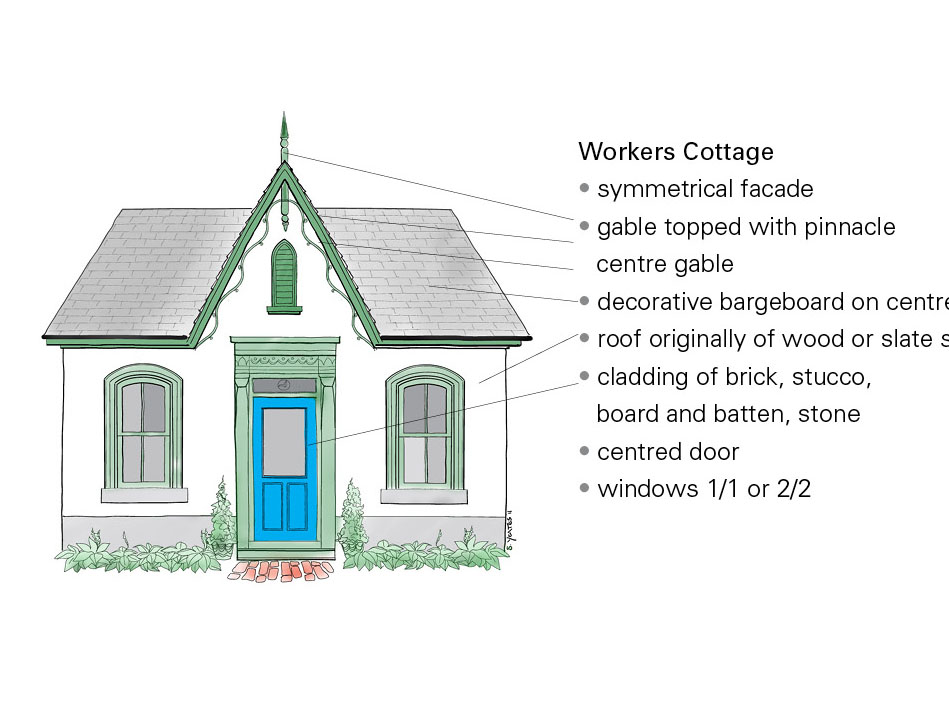
In the late 1800’s the most common form of small house in Ontario and much of the US was the “working-man’s cottage”. This loose design was influenced by British and American architects who were trying to reduce the unsanitary and crowded conditions of working class housing. A model cottage was built at the Crystal Palace industrial exhibition in London in 1851, giving momentum to its appearance in construction pattern books and magazines (e.g. Canadian Farmer in1865) that were used all over North America and Britain. Innovations included water, internal sanitation, fresh air, and separate bedrooms for children – although sanitation was treated as an option in many cases.
The style applied to the cottage was influenced by its location. In Ontario, with many immigrants from Britain, the style leaned to gothic, with details such as finials, barge boarding (gingerbread) and window trim carrying the gothic elements. In addition, a good look at any Cabbagetown cottage may show some Second Empire, Georgian or whatever elements that seemed a good idea at the time. No matter what combination resulted, the outcome was usually pleasing. The early developers of the cottage designs were also trying to raise the spiritual lives of what they would consider the scrabbling classes by improving the aesthetics of their experience. These houses were intended to be simple, efficient, economical and beautiful.
